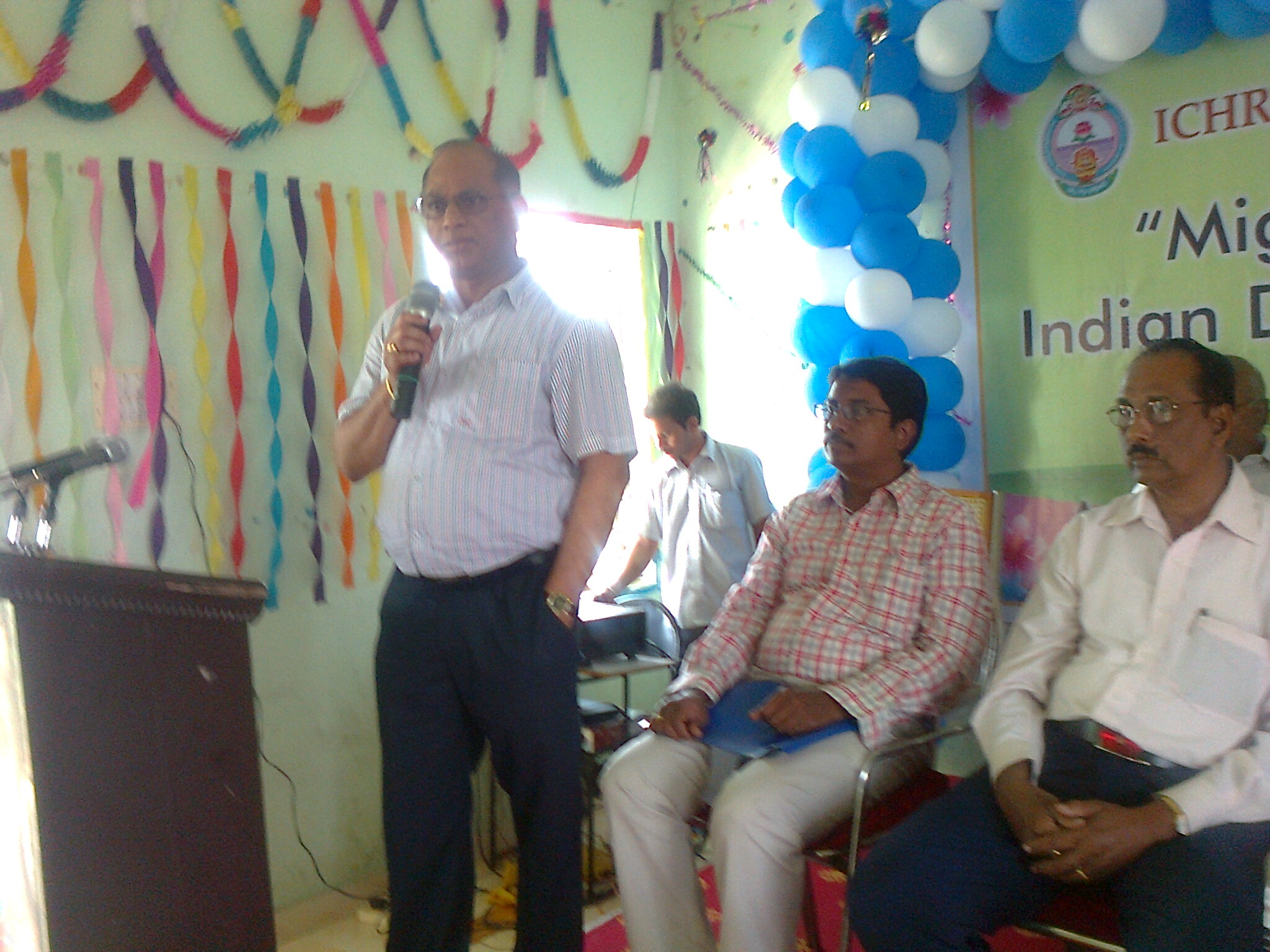“Regional Identity and Nation Building in India (Focus on Telangana Movement)”
A two-day national seminar on “Regional Identity and Nation Building in India (Focus on Telangana Movement)” on March 14 and 15, 2012 was organized by the Department of History and Tourism Management Kakatiya University[1]. Prof Syed Ayub Ali was the Co-ordinator and organizer of the National Seminar and he had meticulously invited scholars from all States of India viz, Jammu and Kashmir, West Bengal, Orissa, Tamilnadu, Kerala, Karnataka and of course Andhrapradesh. The note sent by him gives the following details about the seminar.
The Seminar note gives the following[2]: “India, being a plural society, contains subsystems that are distinct from each other, therefore, natural and may not be considered as impediments in the process of national integration. The political decision makers of India usually treated regionalism as a serious threat to the development, progress and unity of the country and ‘nationalism’ has been used for suppressing regional and ethnic groups instead of giving attention to their socio-economic developments or ignoring their aspirations for a better life. The inevitable results of such a tendency are no doubt alarming so far as the future of India as a nation state is concerned. Demands for institutional and legal safeguards, cultural autonomy and agitation for separate and independent homelands have now become a known phenomenon in Indian political scenario. Naturally we are in a dilemma whether we have a state nation and not a nation state and in another way whether there is nationalism and not nationalism in India after independence!
Telengana Movement: “Keeping in mind the above political scene of India one may look at the genesis and spread of the agitation for a separate Telengana State in South India. Fact remains that the Telengana Movement is not a new event of South Indian history rather it has its roots in the past and to be precise it came to the surface of regional and national politics immediately during the decade after partition. It has, however, developed through various stages and the present violent proportion has knocked the political system of India. But what are the grievances and how have they been rooted out and even where are the points of solutions and all the more from historical point of view how can this be seen in all India perspectives- are some of the queries and concerns of the scholars and researchers of our time.
Sub-themes of the seminar: “Under the above consideration the Department of History, Kakatiya University, Warangal intends to arrange a UGC sponsored (SAP) Two Days, national level seminar on 14th and 15th March, 2012 and as a reputed scholar in this field you are requested to attend and present a paper related to the theme. Some sub-themes are, however, mentioned below for you kind consideration.
Sub-themes of the seminar:
1. Nation and Nationality in South Asia-Concept and Discourses
2. Identity and Identity Assertions-Issues and Dimensions
3. Break up of Deccan Kingdoms and emergence of Independent Kingdoms in South India
4. Transition from Native States to Nation State in South India –basic issues and contradictions
5. Making of Nation building visa verse versa Political Philosophy of Nationalist Leaders on Integration – Highlights on South India.
6. Ethics of Indian Nationalism v/s Linguistic Identity and regionalism
7. Idea of Vishalandhra and issues of Separate Telangana State.
8. Issues in Telengana Grievances-Role of the Media, Political Parties and Leaders an Analysis and assessment
9. Telangana Statehood Movement and the Government of India – Reconciliation or coercion
10. Telengana Movement in All India Perspectives-A Comparative Study
11. Telengana State-Remapping of India (Viability and Reality)”
First day of the Seminar (14-03-2012): The seminar was held at the Senate Hall of the Kakatiya University, Warangal, Andhra Pradesh. Dr. K.A.S.M. Ishrat Alam[3], Research Member Secretary Indian Council of Historical Research, was the Chief Guest who inaugurated the seminar in the Senate Hall on Wednesday (14-03-2012). He pointed out the American and European Universities produced more literature about the SEA coutries suppressing the differences existing among the nations of England, France, Germany etc. Their theories have been only fueling the agitating groups of Africa and SEA.

- Syed Ayub Ali, M. A. Nayeem, K.A.S.M. Ishrat Alam and B Venkat Rathnam
The university vice-chancellor Professor B Venkat Rathnam[4] presided over the programme[5]. In his presidential address, he pointed out how Adi Sankara reached out all the four corners of India in his times. Similarly, the people of Telengama also identify themselves as Indians, demand separate State and the movement has been going on for the last 60-65 years.

- Izimuddhin Sircar, Syed Ayub Ali, M. A. Nayeem, K.A.S.M. Ishrat Alam, B Venkat Rathnam, Dayakar.
Darjeeling North Bengal University Prof. I. Sarkar delivered the Keynote address.

A section of the audience – Kanakarathnam, Shadakshraiah, Sheik Mastan, Jagir Mohammed, Barman, Sundararajan (first row).
K. Srinivasulu[6], Department of Political Science, Osmania University – Karli Srinivasulu is Professor, Department of Political Science, Osmania University, Hyderabad, India. His interests include agrarian and Dalit movements and public policy. He is presently researching on the Politics of Special Economic Zones (SEZs) and State and Business relations in India.

4. Another section of the audience
M. A. Nyeem[7], writer who worked in the British Museum and Salarjung Nuseum., Izinuddhin Sircar and Irashat Alam, ICHR and others spoke about the involving crucial issues and concepts.
Then the technical session of paper presentation started with Dr A. Shadakshraiah, Professor and Chairman Department of History, Bangalore University with the following paper presentation:
- Dr Sheik Mastan, History Department, Bangalore University.
- Dr Barman,
- …
- ……….
Dr A. Shadakshraiah himself presented a paper about the State formation of Mysore and its rule by Udayars. However, he informs that Hyder Ali and Tippu Sultan were ruling Mysore efficiently and effectively.
Dr Sheik Mastan was quoting the definition of “nation” from various western scholars and informing that Indians still do not know as to whether they can call themselves “Indians” or not. It is very difficult to find out a definition who is an Indian.
Afternoon seession was chaired by Dr E. Sudha Rani, History Department, Ambedkar Open University and the following presented their papers:
- Dr Amal Kumar Misra, Utkal University.
- Prof Panda, Berhampur
- Prof Sundararaj, Trichirappalli
- Mr K. V. Ramakrishna Rao, Independent Researcher Chennai[8].
Dr E. Sudha Rani presented a paper pointing out the role of women in Telengana movement, particularly that of Dalit, mentioning about Sadalakshmi. Sumitradevi, Sulochana, Savitra, Eswari and others.
Dr Misra explaining the nuances of State, Nation and Nation-state stressed that the demand of Telengana, if it is within the provisions of the Constitution of India and without any violence, it could be considered.
Prof Sundararaj elaborately delved upon the origin of Telengana movement and pointed out as to how the politicians and others from the beginning did not keep up their promise or gentlemen’s agreement but deceived the aspirants of the movement.
Mr K. V. Ramakrishna Rao pointed out the legal provisions of Self-determination, secession and sedition in the context of regional identity and nation building based on the UN documents, the provisions of the Indian Constitution and, Conditions and provisions attracting “sedition” of different Acts like IPC etc. Therefore, he argued that the demand for separate state within India should be according to the provisions of the Indian Constitution
The Second day of the Seminar (15-03-2012): The second day seminar started on 15-03-2012 at the same place morning chaired by Dr Jigar Mohammed, Head of History Department, Jammu University Baba Saheb Ambedkar Road, Jammu Tawi and the following presented papers:
- Dr.M.Arockiasamy Xavier[9] SJ, St. Joseph’s College (Autonomous)., Tiruchirappalli, History department
- Prof M. Venkateswara Rao, Nellore
- M. Kanakaratnam, HOD History Dept, Dravidian University, Kuppam.
- B Maria John, History Manonmaniam Sundaranar university
Dr Arockiasamy SJ presented a paper on “The Indian Christians in the role of Indian National Movement”.
Prof M. Venkateswara Rao presented a paper of Sri Pratapa Reddy of Telengana region and his contribution to literature.
Dr Kanakarathnam was the only paper presenter, who directly delved upon the Telengana Movement giving many differences existing between the Telengana Andhras and coastal Andhras. He also suggested that Warangal could be developed as a State Capital for Telengana.
Dr Maria John delved upon the state formation of “Madras presidency” and its split ito different states on the basis of linguistic conditions after the State reorganization report.
Finally, Dr Jagir Mohammed presented a paper on “Telengana” as referrd t in Arabic and Persian sources. Drawing attention to the word “Telang” found, he tried to interpret that the Sultans wanted to recognize the regional identity of “Telengana” and thus wanted Pratap Rudradeva of Warangal to recognize the sovereignty of Delhi and pay tax. Taking clue from the word “tilang” appearing, he interpreted that it referred to “Telengana” and the Sultan wanted to recognize the regional identity and only the army that could have violated the orders of the sultan (obviously implying the atrocities committed and looting carried out by Malik Kafur[10]).

M. Arockiasamy presents paper, Jagir Mohammed, Venkateswara Rao, Kanakarathnam and Maria Jon on the dias.

Another view of the paper presenters – Maria John, Kanakarathnam, Venkateswara Rao, Jagir Mohammed.
Last session was chaired by Prof Jagir Mohammed and the papers were presented by –
- Mr Kalkulam Madhu, Spirit Foundation, Chennai
- Dr Siddiqi
- Mr Ramesh, Political Science Department, KU.
- ……………
- ……………
- ………..
By and large, this session was dominated by the issue of Telengana Movement and some papers were presented in Telugu also.

Last session of paper presentation – one view

Last session of paper presentation – another view
At 3.30, the Valedictory function was held.
The following dignitaries were on the dais:
Prof Sadiq Naqvi – A zakir, an author, a teacher, a poet, a sportsman and a historian it is amazing that all these are the attributes of one man[11].
Prof. K. Sayalu[12], Registrar, KU
Prof. M. Ramaswamy, University College, KU., Wgl.
Prof. M. Sarangapani[13] of the Department of Pharmacy is the new UGC Coordinating Officer.

Sarangapani, Ramasamy, Sadiq Naqvi, Sathyanarayana, …………………

Syed Ayub Ali, ………………., Sathyanarayana, Ramasamy, Sarangapani,

Another view of the above.
My observations on the proceedings of the seminar: Ironically, Indian researchers and paper presenters have been quoting from others mainly non-Indians, who say about Indians. Why not Indians know about themselves how they called themselves. They do not research into the details about other “nations” as to whether they have fully achieved. the terms and conditions that are prescribed by the non-Indians. They do not define about the Mohammedans of all sorts, the English, the Portuguese, the French etc. In spite of the fact that they have been mentioned with specific names, they do not discuss about such names and expressions.
None of them pointed out as to how a “state” could be formed within India as per the existing provisions of the Constitution that has been the product of Dr Ambedkar. The Article 3 deals with it specifically. In fact, it can admit new “State” within India i.e, as Sikkim was made and Bhutan recognized as protective State. Under such circumstances, they should remember that India is not “United States of America” or “United Kingdom” but India only that is Bharat (Article.2). If this significance is not understood, perhaps, they are unfit to be “Indians” and they need not misinform, mislead and misguide other Indians.
First of the people of any nation should know how they were called by themselves in the past instead of knowing the present. Historians know very well how they called by themselves. They also know that only Indian and Chinese civilizations have been existing without any break, whereas the other civilizations rose, fell and disappeared. If they are more concerned about the present, instead of the past, then they should explain to others why the Constitution says “India that is Bharath”.
The multi-ethnic, multi-linguistic, multi-religious, multi-nationalities and other multi-factors exist in every “nation” and not only in “India”, a nation in “making” or “breaking” as they to interpret.
Many times they assert that India wan the creation of the British and earlier there was no India.
Yet, they quote from the Arabic and Urdu sources of medieval period that they ruled “India”.
As the Columbus discovered different “India”, Vaso da Gama had to reach “India” with the help of an “Indian” and declare that he discovered sea-route to “India”!
Here, “India” was not merely a geographical concept, as otherwise, they could not have come here to set up factories, slowly studied their society and then turning into rulers with the subversive methods. This is just like how few majority political parties rule India with their so-called “coalition” politics. In fact, it has been co-opt and co-operate looting India.
The European Companies entered into agreements with Indian kings for setting up factories, manufacturing goods, begging tax-exemptions etc. Before that ironically, they had to find route to India. Here also, the cheating of VOC can be cited, as they did not pay tribute, taxes but declared insolvent and ran away.
In fact, they could have mentioned that Vasco d agama discovered sea-route to Calicut or happily landed in Calicut as guided by the “Gujarathi sailor” to reach Kerala!
All Mohammedans of all sorts could have written that they invaded, looted, conquered Sind, Hind, etc., instead of Delhi.
During 12th-13th centuries, the Cholas were reigning supreme and therefore, during that period, the Mohammedan invasion could not have taken place. In 1311 malikaffur invaded and looted Southern Kingdoms taking advantage of the Pandyas acting against the Cholas. King Prataparudra (1158–1195) was taken prisoner. He committed suicide by drowning himself in the river Narmada, while being taken to Delhi by the Mohammedans.
The origin of the word “Tilang / T’lang / tailanga / tilang / tenugu / tenungu / telugu” etc: It is well known that the word and expression “tilang / teleng / telengana” etc., were evolved from “Trilinga” as Andhra was known as “Trilingadesha” i.e, the land of three Lingas i.e, dominated by the Saivite part of Hindu religion[14]. Ptolemy also used the expression “trilinga” (trilingon, triglypton). Tailanga of Burma is equated with tilanga[15], capital of Arkan[16]. Of course, both the scripts of Telugu and Burmese have similarities. The Chinese records mention K’lang and T’lang referring to the regions of Kalinga and Telenga i.e, modern Orissa and Andhra. During the medieval period it was known as tilang / telangana as mentioned by the Muslim Chroniclers[17]. None can ask ask to why the ancient Tamils do not mention them as so, as they never called them “Dravidians” in their Sangam literature. Therefore, all words and expressions denote to the region of Andhra and Andhrapradesh only and it cannot be interpreted that it referred to “Telengana” as perceived and conceived by the paper presenters.
Those who do not call themselves Indians can go out of India instead of cracking jokes: When Indians have been there for thousands of years, the persons or writers or scholars of yesterday cannot certify nationhood to India or deny it. India was there and it has been getting reduced due to various factors during the last 2000 years. Indians need not listen to others about what they say about them (Indians). Indians have not been determining or defining the nationhood or statehood of other countries.
Having Indian passports, claiming as Indian citizens, if anybody says differently, that shows he is not an Indian, does not want to be an Indian or at the worst anti-Indian[18]. Those types of Indians are not required for India. They can renounce their Indian citizen, throwing away their Indian passports and identities cards and go to any nation they want whether it is a full-fledged “nation”, “half-nation”, “quarter-nation” or “nation in making” if not breaking. They cannot misinterpret facts or send a wrong signal to the youngsters or the coming generation about India where they were born and brought up with their father-mother and forefathers for many hundreds and thousands of years. Or as mention above, they can leave India, migrate to some other nation and live as non-Indians.
What the people who crave for “Telengana” should do?: The people who demand for a separate State of Telengana within India should consider the following seriously:
- The President of India should admit a bill in Lok Sabha and Rajya Sabha.
- The Bill should be introduced with recommendation of the President in the Parliament.
- Parliament is the elected members and therefore 2/3rds majority should be there to introduce the bill.
- It should be introduced within a prescribed period.
- As it affects the other states by area, boundaries or name, they should not object to it.
- After the debate, 2/3rds majority should accept the bill.
- After the passing of the Bill, the Act enacted would pave way for the creation of a new state.
But, the paper presenters and as well as the inspirers and sympathizers of the “Telengana” were simply making emotional speeches, suggestions, inducements and appeals instead of educating them how to proceed effectively and legally in this regard. The following illustrations are given as to how one can interpret about other nations also applying the same yardstick and methodology.
United Kingdom is not united nation as being portrayed: United Kingdom is mentioned so because, it comprises of many nations England, Scotland, Ireland and other parts of native Celts and Druids. Now during the 200 years many Asians were incorporated into the English society for various reasons. Thus, UK has been multi-national, multi-ethnic, multi-linguistic, multi-cultural, multi-traditional and so on. Indian scholars cannot think London is England or UK. The following table explodes the myth that the people of England do not speak English but so many other languages. Scots and Welsh speaking people are more than that of English speaking people of England.
|
Language
|
Type
|
Spoken in
|
Rank: no. of speakers in the UK
|
| English |
West Germanic |
Throughout the United Kingdom |
1: 55 million with varying dialects |
| Scots |
West Germanic |
Scotland (Scottish Lowlands, Caithness, Northern Isles)
Northern Ireland (counties Down, Antrim,Londonderry) |
2: As many as 1.5 million with varying dialects |
| Welsh |
Celtic Brythonic) |
Wales and parts of England near the Welsh-English border |
3: 761,000 (based on a 2004 survey conducted by Bwrdd yr Iaith Gymraeg and the United Nations High Commissioner for Refugees) |
| British Sign Language |
BANZSL |
Throughout the United Kingdom |
4: 125,000 [14] |
| Irish |
Celtic(Goidelic) |
Northern Ireland |
5: 95,000 (based on 2004 data) |
| Angloromani |
Mixed |
England, Scotland, Wales |
6: 90,000[15] |
| Shelta |
Mixed |
Throughout the United Kingdom |
7: Fewer than 86,000 worldwide, numbers in UK unknown. |
| Scottish Gaelic |
Celtic(Goidelic) |
Scotland (Scottish Highlands with substantial minorities in various cities) |
8: 58,552 (based on Scotland’s 2001 Census) |
| Cornish |
Celtic(Brythonic) |
England (Cornwall) |
9: 2,000 fluent |
According to the 2001 Census, the ethnic composition of the United Kingdom was[19]:
|
Ethnic group
|
Population
|
Proportion of total UK population
|
Remarks
|
| White British |
50,366,497
|
85.67%
|
Thus, it can be interpreted that there have been many ethnic groups have been there in England.So, each ethnic group with different language speaking criterion can claim separate state.In fact, such movements have been going on in England.
The Protestant England and Catholic Ireland have been fighting with each other.
The Druids, one of the smallest ethnic and cultural group has been oppressed and suppressed[20]. Their cultural and traditions rights are denied every year[21]. However, Indians do not research into all these aspects or present papers
|
| White (other) |
3,096,169
|
5.27%
|
| White Irish |
691,232
|
1.2%
|
| Mixed race |
677,117
|
1.2%
|
| Indian |
1,053,411
|
1.8%
|
| Pakistani |
747,285
|
1.3%
|
| Bangladeshi |
283,063
|
0.5%
|
| Other Asian (non-Chinese) |
247,644
|
0.4%
|
| Black Caribbean |
565,876
|
1.0%
|
| Black African |
485,277
|
0.8%
|
| Black (others) |
97,585
|
0.2%
|
| Chinese |
247,403
|
0.4%
|
| Other |
230,615
|
0.4%
|
If take the case of France, the languages spoken there are as follows –
France is not a single nation[22]: At the 1999 census, INSEE sampled 380,000 adult people all across Metropolitan France, and asked them questions about their family situation. One of the questions was about the languages that their parents spoke with them before the age of 5. This is the first time serious statistics were computed about the proportion of mother tongues in France. The results were published in Enquête familiale, Insee, 1999. Here is a list of the nine most prominent mother tongues in France based on Enquête familiale.
|
Rank
|
Language
|
Mother tongue
|
Percentage of adult population
|
|
1
|
French
|
39,360,000
|
86%
(note that this figure is an underestimate because people under 18 years of age were not surveyed; see note #2 below the table)
|
|
2
|
German dialects
(Alsatian, Lorraine Franconian, etc.)
|
970,000
(of whom Alsatian: 660,000;
standard German: 210,000;
Lorraine Franconian: 100,000)
|
2.12%
(of whom Alsatian: 1.44%;
standard German: 0.46%;
Lorraine Franconian: 0.22%)
|
|
3
|
Arabic
(especially Maghrebi Arabic)
|
940,000
|
2.05%
|
|
4
|
Occitan language
(Languedocian, Gascon, Provençal, etc.)
|
610,000
(another 1,060,000 had some exposure)
|
1.33%
(another 2.32% had some exposure, see notes)
|
|
5
|
Portuguese
|
580,000
|
1.27%
|
|
6
|
Oïl languages
(Picard, Gallo, Poitevin, Saintongeais, etc.)
|
570,000
(another 850,000 had some exposure)
|
1.25%
(another 1.86% had some exposure, see notes)
|
|
7
|
Italian, Corsican and Ligurian (Niçard)
|
540,000
|
1.19%
|
|
8
|
Spanish
|
485,000
|
1.06%
|
|
9
|
Breton
|
280,000
(another 405,000 had some exposure)
|
0.61%
(another 0.87% had some exposure, see notes)
|
|
10
|
About 400 other languages
(Polish, Berber languages, East Asian languages, Catalan, Franco-Provençal, Corsican, Basque, West Flemish, etc.)
as well as those who gave no response
|
2,350,000
(of whom English: 115,000)
|
5.12%
(of whom English: 0.25% of total adult population)
|
|
Total
|
45,762,000
(46,680,000 including those with two mother tongues who were counted twice)
|
102%
(2% of people have both French and another language as their mother tongue, thus, they are counted twice)
|
The above two have been given for illustrative purposes and not exhaustive. Like this, a genuine researcher can go into the details of every “nation” that were already built with all their terms and conditions to note that such nations themselves have many multi-factors with which they try to gauge or standardize other so-called “developing nations”, “nations in developing”, “making nations”, or “nations in making”.
K. V. Ramakrishna Rao
18-03-2912
[2] The “Seminar note” was sent by the organizer Prof Syed Ayub Ali to the participating paper presenters by e-mail.
[8] I am posting my paper “The Changing concepts of “Self-determination, Secession and Sedition” in the context of demand for Separate State”, separately for critical comments so that it can be modified, perfected and incorporated additional points.
[10] Elliot and Dawson, The History of India as told by its own historians, LPP, New Delhi, 2001, Vol.III, p.49, 78, 231-232, 550. It gives the details of how Malik kafur destroyed temples, killed Hindus, looted wealth etc. The sultan in fact ordered to pay Jizya with all conditions. Prataprudradeva was taken to Delhi with his wives and children. But the paper presenter avoided everything and interpreted as if the “Telengana” was existing in those days and the Delhi Sultan recognized and in the same way, now Delhi could recognize.
[14] Robert Caldwell, A Comparative Grammar of the Dravidian or South-Indian Family of Languages, University of Madras, 1976, pp.26-30.
[15] Sir Stamford Raffles observed the similarity among the “Trinity” sculptures of SEA and South India and noted that the Paramban Trinity could have been derived from Andhra.
S. Raffles, History of Java, AES, New Delhi, Vol.II, p.73.
[16] K. R. Subramanian, Buddhist Remains in Andhra and the History of Andhra between 225 and 610, AES, New Delhi, 1989, p.6, 135, 138.
[17] Shrerwani and P. C. Joshi, History of Medieval Deccan, Andhrapradesh Govt.
K. Gopalachari, Early History of Andhra Country, University of Madras, 1976.
[18] When one paper presenter was asked why Indians could not identified or their nation, he told one joke where five or six people meeting in a foreign country (note he did not say nation) introducing themselves as “American”, “French” but people from India as “Bihari”, etc. But, he coolly forgot that those two / three persons calling themselves as “Bihari” etc., were having Indian passports, applying to Indian authorities claiming themselves as “Indians” in the applications.
[22] These details and tables are taken from Wikipedia after checking with the sources mentioned and as well as giving other sources referred to.
———————————————————————————————————————————————–
Filed under: ambedkar, andhra, bharat, boundary, civilization, constitution, country, culture, ethnicity, heritage, india, jammu, jizya, kakatiya university, karnataka, kashmir, kerala, language, limit, linguistics, malik kafur, nation, nation building, nation-state, nationalism, nationality, orissa, plural, prataprudradeva, race, regionalism, secession, sedition, self-determination, state, tailing, tamilnadu, tax, telengana, telugu, thenugu, tilang, tradition, warangal | Tagged: Andhra, Ariyar, bharat, boundary, civilization, constitution, culture, Damila, delegate, Delhi, Digambara, Dramila, Dravida, Dravidam, Dravidar, Dravidi, ethnicity, heritage, Hindus, India, jainism, Jammu, Jizya, Kafirs, Karnataka, Kashmir, Kerala, limit, Malik kafur, Mohammedans, Muslims, nation, nation-state, nationalism, Orissa, race, racialism, racism, state, Sultan, tailanga, Tamilnadu, T’lang, telugu, tenugu, tenungu, Tilang, tradition, West Bengal | 6 Comments »











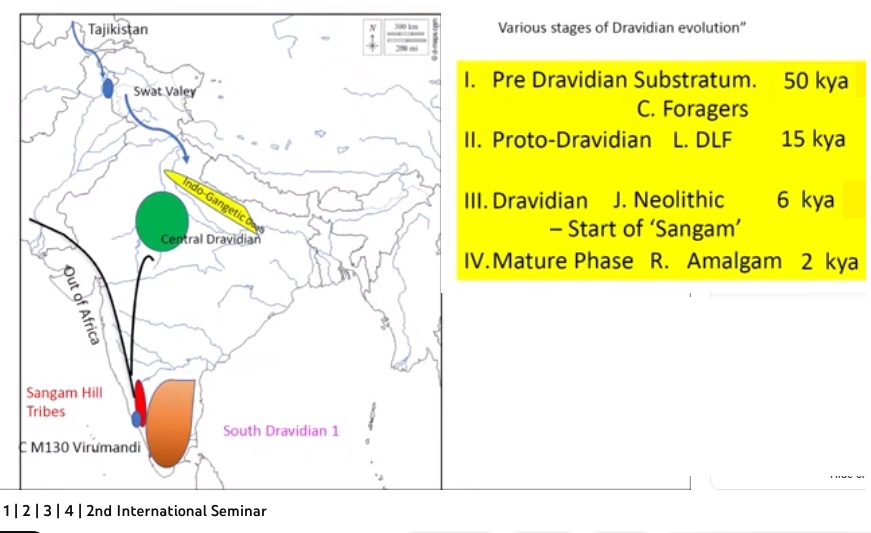
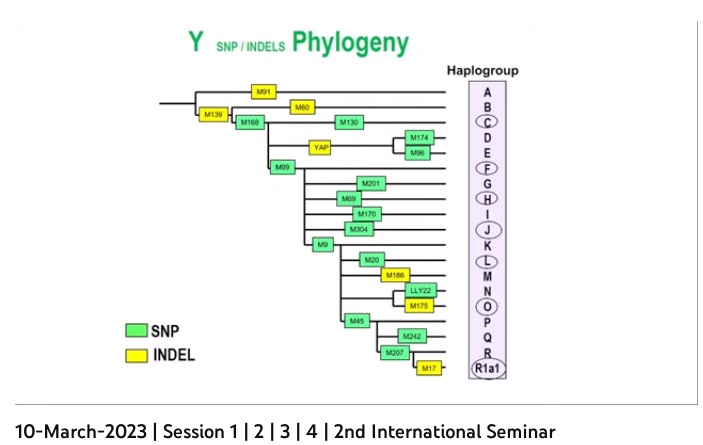
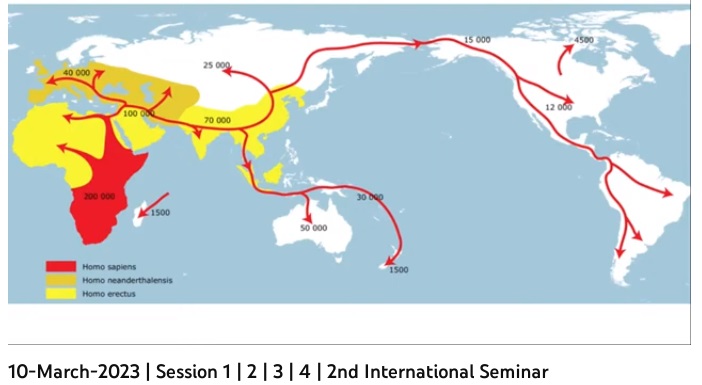
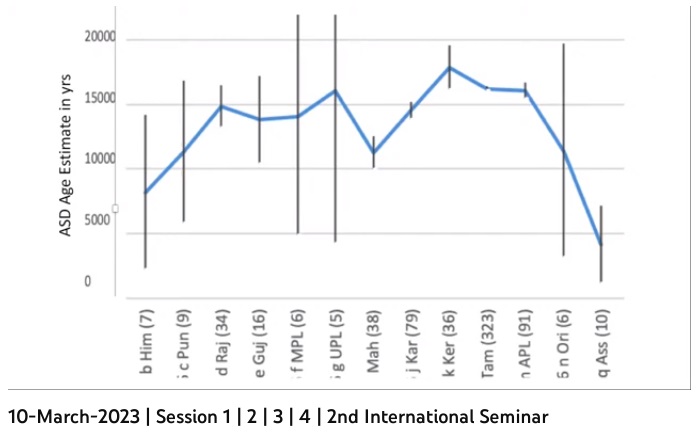
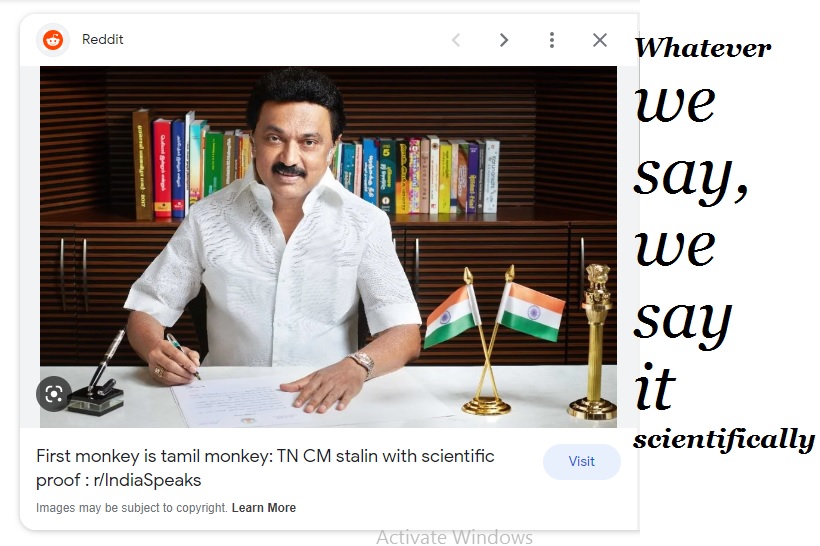

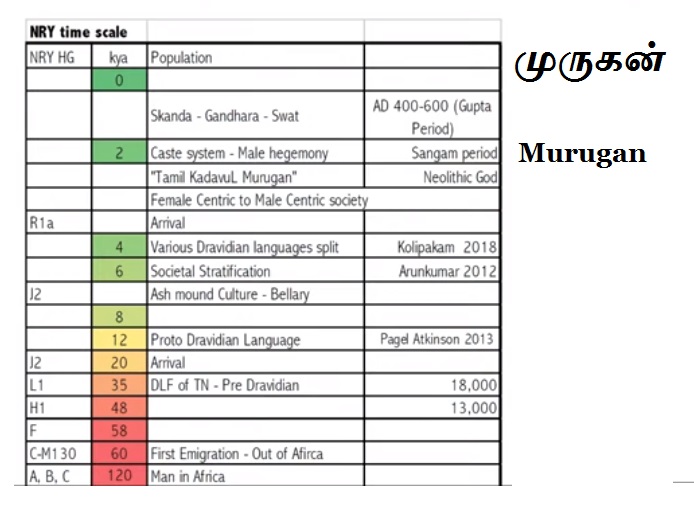
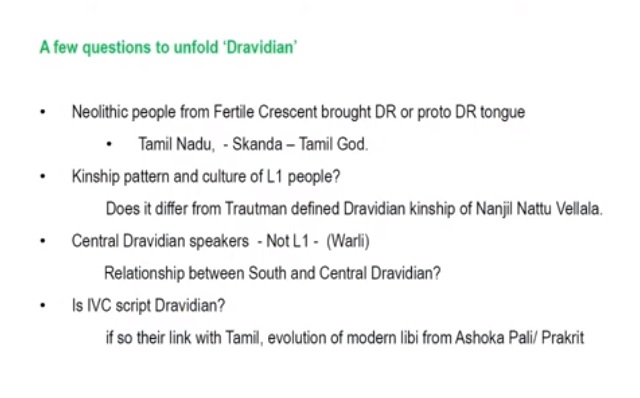

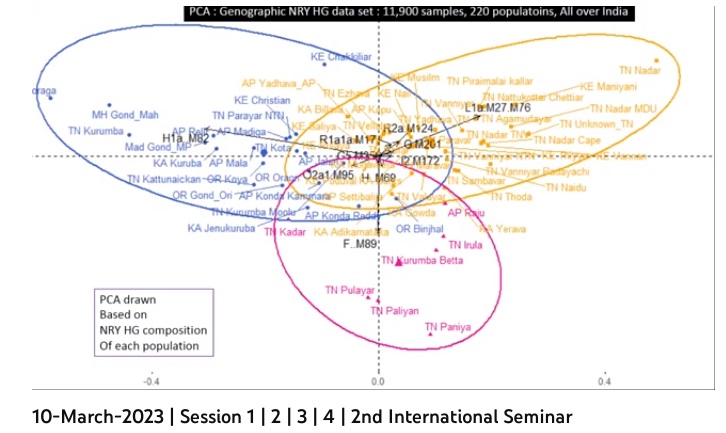

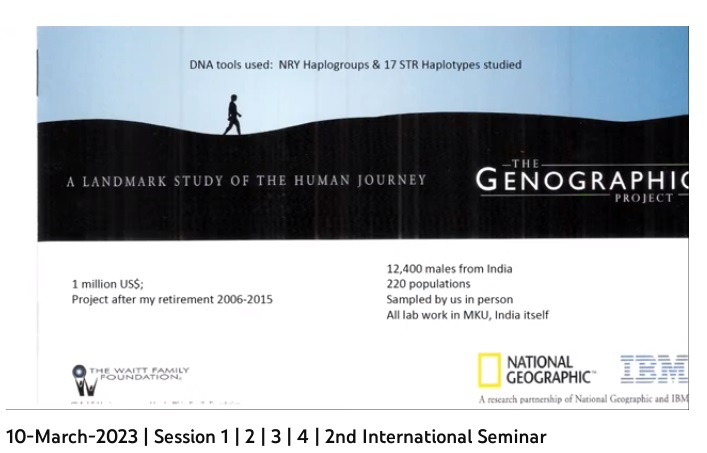


















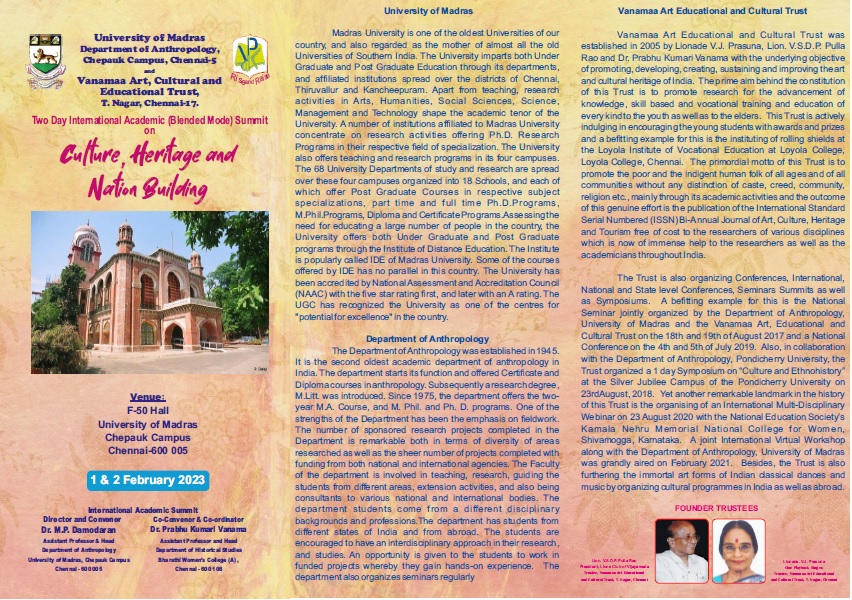


















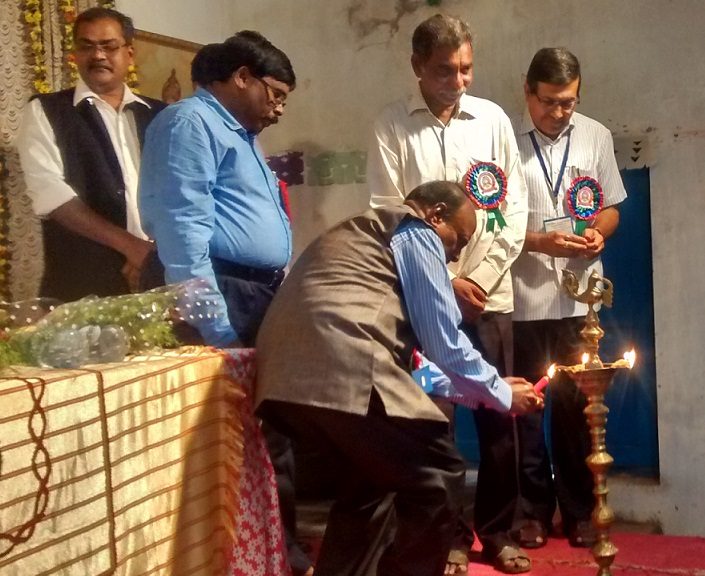









 In India only, the British brought certain acts to segregate and brand certain tribes as “criminal”, as they did not obey to them by force or otherwise. The term Criminal Tribes Act (CTA) applies to various pieces of legislation enforced in India during British rule; the first enacted in 1871 as the Criminal Tribes Act, 1871 applied mostly in North India. The Act was extended to Bengal Presidency and other areas in 1876, and, finally, with the Criminal Tribes Act, 1911, it was extended to Madras Presidency as well. The Act went through several amendments in the next decade and, finally, the Criminal Tribes Act, 1924 incorporated all of them.
In India only, the British brought certain acts to segregate and brand certain tribes as “criminal”, as they did not obey to them by force or otherwise. The term Criminal Tribes Act (CTA) applies to various pieces of legislation enforced in India during British rule; the first enacted in 1871 as the Criminal Tribes Act, 1871 applied mostly in North India. The Act was extended to Bengal Presidency and other areas in 1876, and, finally, with the Criminal Tribes Act, 1911, it was extended to Madras Presidency as well. The Act went through several amendments in the next decade and, finally, the Criminal Tribes Act, 1924 incorporated all of them.






















